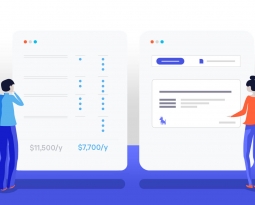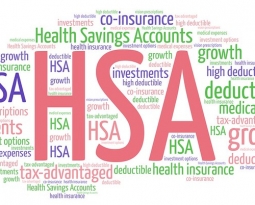
Actuarially Equivalent – Plan Designs
What Is Actuarial Science?
Actuarial science is a discipline that assesses financial risks in the insurance and finance fields, using mathematical and statistical methods. Actuarial science applies the mathematics of probability and statistics to define, analyze, and solve the financial implications of uncertain future events. Traditional actuarial science largely revolves around the analysis of mortality and the production of life tables, and the application of compounding interest.
Deductible?
The amount of money that employees must pay out-of-pocket before health insurance kicks in. On average, $1,669 per person per year.
No one likes high deductibles, but employers must maintain the same actuarial equivalence of their health insurance plans.
If would be great to eliminate the deductible AND keep the health insurance plan actuarially equivalent. Is that even possible?
The answer is YES….through Copayments.
The copays for a health insurance plan can be structured in a scaled fashion such that the deductible is GONE, but the percent of healthcare expenses paid by the member vs the employer stay the same.
For example, a typical high-deductible PPO plan will have an individual deductible of $1,500, copays for office visits and medications only, and 20% co-insurance for labs, imaging, procedures, surgery and hospitalizations up to an out-of-pocket max of $4,000.
Conversely, an alternative health plan with only copays will have an individual deductible of $0, similar copays for office visits and medications and NO co-insurance.
An alternative health plan replaces the deductible and co-insurance with copays for labs, imaging, surgery and hospitalizations.
More expensive medical services have copays that are several hundred dollars, so there is still cost-sharing in the plan design between the member and the plan itself, BUT that cost-sharing is more evenly ‘spread out’ instead of ‘front-loaded’ against the member.
This ‘spreading-out’ of the cost-sharing makes medical services more affordable and can lead to medical problems being caught and treated earlier.
Example:
Back-pain can most frequently be addressed through office visits, non-narcotic pain medication, MRIs, physical therapy and occasionally out-patient steroid injections. In a typical high-deductible health plan, the out-of-pocket cost for that care would likely be in excess of $1,000. Many employees are unable to afford $1,000 of unplanned expenses and would not seek care.
Unfortunately, back-pain decreases mobility and can lead to weight-gain from being overly sedentary. Increased weight makes back pain worse through additional pressure on the spine.
Additionally, back-pain can cause employees to need to take time off work, which for hourly-employees is especially problematic because it leads to a loss of income as well.
Unaddressed and worsening back-pain can lead to ER visits, referrals to spine surgeons and the prescription of addicting narcotic pain medication. This care might cost several thousand dollars, and the narcotic medication can lead to a downward spiral of personal and professional consequences.
On the other hand, a copay-only alternative health plan allows an employee to have office visits, medication and physical therapy for <$100. Because the care is affordable, the employee can seek care sooner and avoid the MRIs, injections, ER visits, specialist referrals and narcotic pain medication.
In the above example, the employer did NOT change the actuarial value of the health plan. Rather, the employer decreased the initial out-of-pocket cost to the employee and increased access to care.
In fact, the overall cost of care was even lower in the copay-only alternative health plan because the cost-share was more effectively distributed.
At TREK we have an insurance carrier that does this, we can change the copays to reduce costs. We are now showing this concept at renewal.
Call with questions!








